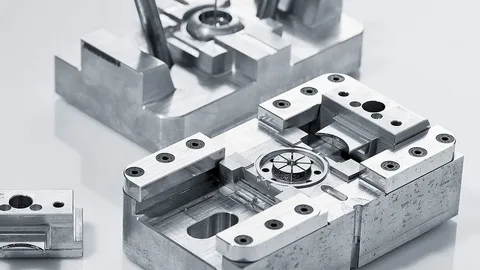In the evolving landscape of manufacturing, Sheet Metal Fabrication has undergone a significant transformation, largely due to advancements in digital technologies. Among these, Computer-Aided Design (CAD) stands out as a cornerstone in revolutionizing how sheet metal components are designed, prototyped, and produced. CAD not only enables greater design accuracy and efficiency but also bridges the gap between conceptualization and production, offering manufacturers a competitive edge in delivering precise, high-quality metal parts.
This article explores the critical role CAD plays in modern Sheet Metal Fabrication, covering key aspects such as design efficiency, cost optimization, precision engineering, collaboration, and future trends. Understanding these elements can help both manufacturers and clients appreciate the value CAD brings to the fabrication process, and why it’s an indispensable tool in today’s industrial operations.
Enhancing Design Efficiency in Sheet Metal Fabrication
One of the most significant contributions of CAD in Sheet Metal Fabrication is the substantial boost in design efficiency. Traditional manual drafting methods were time-consuming, prone to errors, and lacked flexibility when changes were required. With CAD, engineers can create intricate sheet metal designs with precise dimensions and configurations using software tools that automate repetitive tasks and streamline workflows. This not only accelerates the design process but also allows for easy revisions and iterations without starting from scratch.
Moreover, CAD tools offer libraries of pre-defined features such as bends, flanges, and cut-outs specific to Sheet Metal Fabrication, which further speeds up the design phase. Engineers can simulate real-world constraints, predict material behavior, and account for tolerances during the design stage itself. This reduces the likelihood of costly revisions during production and ensures that every component is fabricated correctly the first time. As a result, manufacturers can bring products to market faster while maintaining high standards of quality.
Increasing Accuracy and Reducing Errors
CAD software significantly improves accuracy in Sheet Metal Fabrication by minimizing human error and allowing for exact measurements and tolerances. Every bend, cut, and hole can be plotted with precision using digital modeling, ensuring that the final product matches the design specifications to the smallest detail. This level of accuracy is crucial in industries like aerospace and automotive, where components must meet strict regulatory and performance standards.
Additionally, CAD integrates with simulation tools that can identify potential issues in the design before a single sheet of metal is cut. Engineers can perform stress tests, thermal analysis, and movement simulations to see how a part will perform under real conditions. These predictive capabilities eliminate guesswork and reduce waste, as fewer physical prototypes are required. By using CAD for precision modeling, Sheet Metal Fabrication becomes a more reliable and cost-effective process from start to finish.
Streamlining Communication and Collaboration
In modern manufacturing, collaboration between various departments and stakeholders is key to successful project execution. CAD facilitates better communication in Sheet Metal Fabrication projects by providing a centralized platform for design documentation and revisions. Teams from design, engineering, production, and quality assurance can access the same files in real time, ensuring consistency and alignment throughout the development cycle.
Cloud-based CAD platforms further enhance collaborative capabilities by enabling remote access and live editing, which is especially valuable for teams distributed across different locations. Changes made by one user are instantly visible to others, reducing delays caused by back-and-forth communication. Moreover, CAD files can be easily exported in standardized formats such as DXF or STEP for use in CNC machines and laser cutters, streamlining the transition from design to production. This connectivity across functions leads to a more integrated and agile Sheet Metal Fabrication process.
Cost Optimization Through CAD-Driven Prototyping
CAD plays a pivotal role in reducing costs associated with Sheet Metal Fabrication, particularly in the prototyping phase. By using CAD models, manufacturers can create digital prototypes that are tested and refined virtually, minimizing the need for physical models. This virtual prototyping dramatically cuts down material costs, labor hours, and machine usage. Additionally, CAD-driven prototyping allows for rapid design iterations without the delays and expenses of traditional trial-and-error methods.
CAD software also enables nesting optimization, a process where multiple parts are arranged on a single sheet of metal to maximize material usage and minimize waste. By strategically placing components to reduce scrap, manufacturers can significantly lower material costs. Furthermore, accurate CAD designs reduce the risk of production errors, which can result in costly rework or rejected parts. In this way, CAD contributes not only to better product quality but also to more profitable Sheet Metal Fabrication operations.
Driving Innovation and Future Trends
As manufacturing technologies evolve, CAD continues to play a central role in driving innovation within Sheet Metal Fabrication. The integration of CAD with other advanced technologies such as AI, machine learning, and additive manufacturing is opening new frontiers in design automation and customization. Engineers can now create generative designs that optimize weight, strength, and material usage based on pre-defined criteria, resulting in components that are both efficient and high-performing.
Moreover, as Industry 4.0 gains momentum, CAD is becoming an essential part of the digital thread connecting design, production, and supply chain operations. Real-time data from IoT-enabled machines can feed back into CAD systems to inform future designs and process improvements. Augmented Reality (AR) and Virtual Reality (VR) technologies are also being integrated with CAD tools to offer immersive design reviews and training simulations. These innovations ensure that Sheet Metal Fabrication remains at the forefront of modern manufacturing, capable of meeting the evolving demands of various industries.
Conclusion
The importance of CAD in modern Sheet Metal Fabrication cannot be overstated. From boosting design efficiency and ensuring precision to enhancing collaboration and optimizing costs, CAD has transformed how sheet metal components are conceptualized and produced. It has reduced barriers to innovation and empowered manufacturers to respond swiftly to market demands with greater accuracy and reduced risk.
As the industry moves further into the digital age, CAD will continue to evolve and integrate with emerging technologies, cementing its role as an indispensable tool in Sheet Metal Fabrication. By adopting CAD-driven processes, manufacturers can achieve higher productivity, lower costs, and better product quality—ensuring long-term competitiveness in a dynamic global market.



